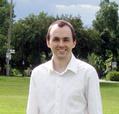Cited By
View all- Nagashima Y(2023)Genetic Algorithm for Program SynthesisFundamentals of Software Engineering10.1007/978-3-031-42441-0_8(104-111)Online publication date: 30-Aug-2023
- Nawaz MNawaz MHasan OFournier-Viger PSun M(2021)Proof searching and prediction in HOL4 with evolutionary/heuristic and deep learning techniquesApplied Intelligence10.1007/s10489-020-01837-751:3(1580-1601)Online publication date: 1-Mar-2021
- Nawaz MSun MFournier-Viger P(2021)Proof Searching in PVS Theorem Prover Using Simulated AnnealingAdvances in Swarm Intelligence10.1007/978-3-030-78811-7_24(253-262)Online publication date: 17-Jul-2021
- Show More Cited By





